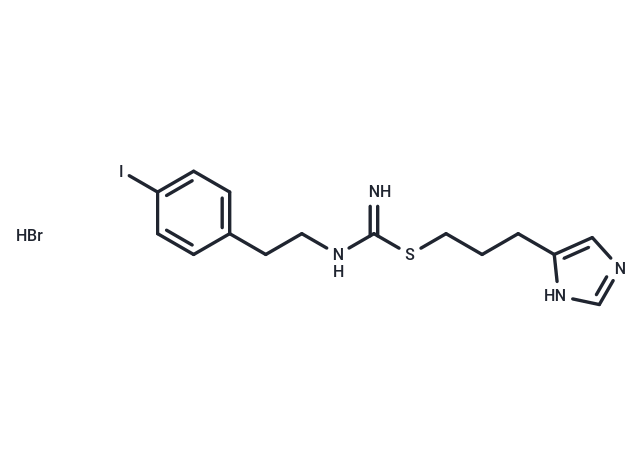Shopping Cart
- Remove All
 Your shopping cart is currently empty
Your shopping cart is currently empty

Iodophenpropit dihydrobromide is an effective and selective antagonist of the histamine H3 receptor. The binding of [125I]Iodophenpropit is readily reversible, selective, and of high affinity (KD: 0.32 nM).

| Pack Size | Price | Availability | Quantity |
|---|---|---|---|
| 5 mg | TBD | 35 days | |
| 10 mg | TBD | 35 days |
| Description | Iodophenpropit dihydrobromide is an effective and selective antagonist of the histamine H3 receptor. The binding of [125I]Iodophenpropit is readily reversible, selective, and of high affinity (KD: 0.32 nM). |
| Targets&IC50 | H3 receptor:0.32 nM (kd) |
| In vitro | Iodophenpropit suppresses 5-hydroxytryptamine (5-HT) responses (IC50 of 1.57±0.3 μM)[3]. Iodophenpropit is a very potent H3 receptor antagonist and displays only a moderate affinity for the H1 and H2 receptors [2]. |
| In vivo | In rabbits, Iodophenpropit (1 μg/kg; through intramuscular; b.i.d.; for 10 days) displays obviously enhancement of total anti-sheep red blood cells (SRBC)- immunoglobulins (Igs)[4]. |
| Molecular Weight | 495.22 |
| Formula | C15H20BrIN4S |
| Cas No. | 145196-87-8 |
| Relative Density. | no data available |
| Storage | Powder: -20°C for 3 years | In solvent: -80°C for 1 year | Shipping with blue ice. |

Copyright © 2015-2025 TargetMol Chemicals Inc. All Rights Reserved.